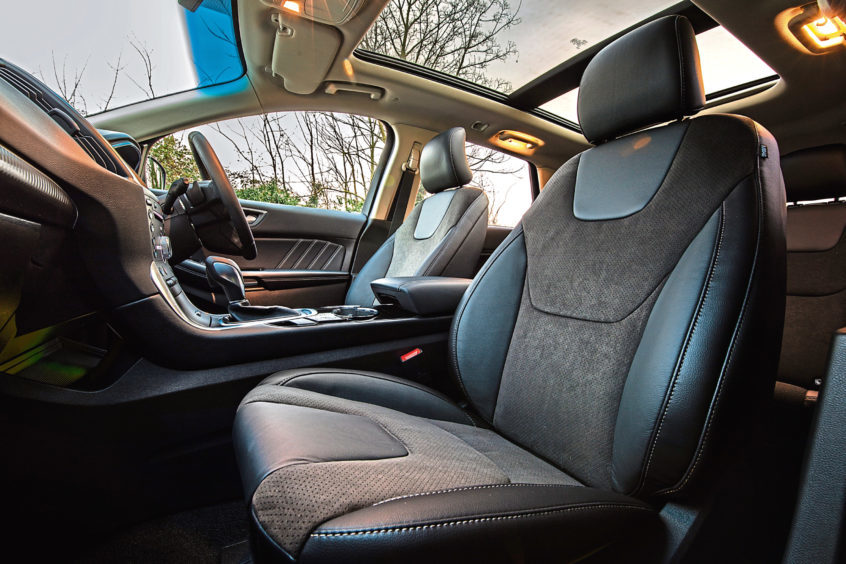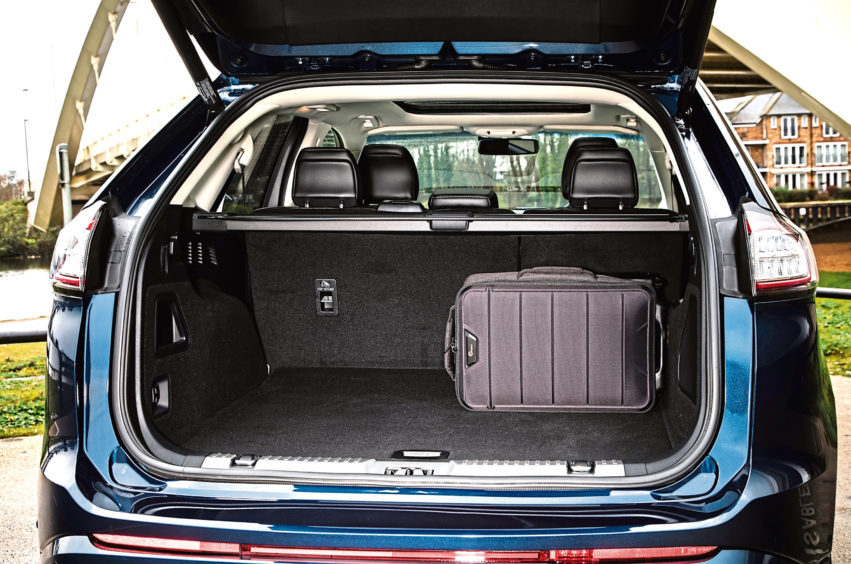I’m wafting along the M90 towards Perth, looking down on other drivers with a fine summer’s breeze drifting in the windows.
With comfortable seats beneath me and a technology laden dashboard in front of me I could easily be driving a luxury SUV made by BMW, Audi or even Range Rover.
In fact I’m in a Ford. The Edge is the biggest SUV made by the American brand, sitting above the Kuga and Ecosport.
It was launched in 2015 to capitalise on the current craze for SUVs. Earlier this year the ST Line version I’m testing was added to the line up.
ST Line models have been gradually added across Ford’s range since 2016, the idea being to sprinkle some of the fairy dust that makes the Fiesta ST so special across other models in the range.
So, while ST Line models don’t get the kind of engine that makes the Fiesta ST such a racy hot hatch, they get a sportier looking exterior and a smartened-up interior.
In the case of the Edge, a more aggressive body kit, dark exterior detailing, black roof rails and larger platinum grey 20in wheels help to accentuate the big SUV’s chunky looks.
Inside the seats are clad in Dinamica – an environmentally friendly alternative to suede – while the driver’s seat gets 10-way electric adjustment. Drilled aluminium pedals and a Sony stereo/navigation system complete the internal make over.
The ST Line gets firmer suspension and adaptive steering, which is light around town but gains more heft at higher speeds.
The result is a pleasing improvement in driving dynamics. The standard Edge is a comfortable beast but wallows a bit in corners.
The ST Line’s firmer suspension suits Scottish roads, which are twistier and bumpier than the bowling-alley-straight lanes along which American Edge-buyers drive.
The 2.0 litre diesel engine hustles the car up to 62mph in 9.4 seconds and returns MPG well in the 40s. Intelligent four-wheel drive puts power down through the front wheels with the rears coming into play when more grip is needed.
Priced at more than £40,000, the Edge is expensive for a Ford. It’s much bigger and better equipped than a £40,000 Audi Q5 or BMW X3, however.
I’d like to see seven seats in a car this size, but apart from that the Edge ticks all the boxes.
Price:
£40,595
0-62mph:
9.4 seconds
Top speed:
131mph
Economy:
47.9mpg
CO2 emissions:
152g/km


